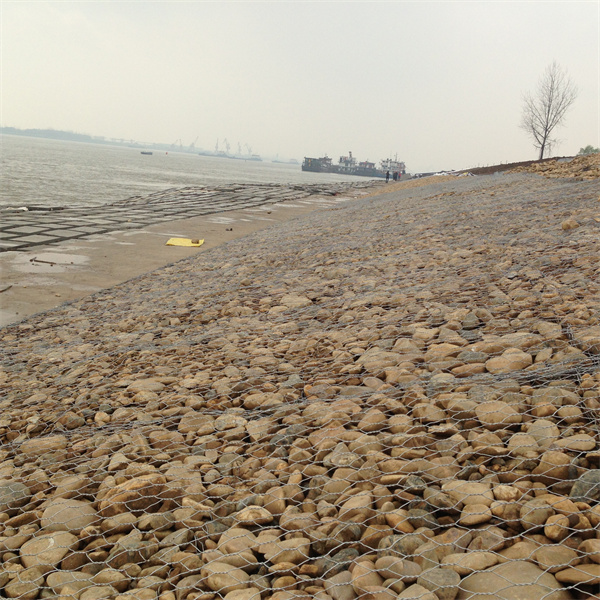Dec . 29, 2024 06:46 Back to list
gabion connectors
Exploring Gabion Connectors A Key Component for Structural Stability
Gabions, which are wire mesh containers filled with rocks, stones, or similar materials, have been widely used in civil engineering and landscape design for various purposes, including erosion control, retaining walls, and decorative features. One critical aspect of gabion construction is the use of connectors, which play a vital role in ensuring the structural integrity and longevity of these installations. This article will explore the significance of gabion connectors, their types, and their applications.
Importance of Gabion Connectors
Gabion connectors are essential for maintaining the stability of gabion structures. They serve several purposes, including
1. Enhancing Structural Integrity Connectors help hold individual gabion units together, providing a cohesive structure that can withstand forces such as water flow, soil pressure, and environmental stress.
2. Facilitating Assembly Proper connectors streamline the installation process, enabling quicker assembly of gabion walls and cages, which is particularly advantageous in large projects where efficiency is crucial.
3. Ensuring Durability High-quality connectors prevent the disintegration of gabion structures over time. They protect against degradation due to environmental factors such as corrosion, especially in coastal or industrial areas where exposure to saline or acidic conditions occurs.
4. Allowing for Flexibility Advanced connector designs can allow for some movement within the structure, accommodating shifts in the earth or changes in water levels without compromising stability.
Types of Gabion Connectors
There are several types of gabion connectors, each serving specific needs depending on the project requirements
1. Connector Clips These clips are typically made from galvanized steel or other corrosion-resistant materials. They securely fasten gabion boxes together, providing lateral support and minimizing shifting between units. Connector clips are easy to install, making them a popular choice for many gabion applications.
gabion connectors

2. Binding Wire A traditional method of connecting gabions, binding wire can be wrapped around the edges of adjacent gabion baskets to hold them in place. While this method may require more labor and time, it offers exceptional strength and durability when executed correctly.
3. Steel Rods and Pins For larger or more permanent structures, steel rods and pins can be used as connectors. They are inserted through the gabion wire mesh and into the ground or among the stones to enhance stability. This method is particularly effective for larger gabion walls that need to bear significant loads or resist substantial forces.
4. U-shaped Clips Designed for more robust connections, U-shaped clips wrap around the wire mesh of gabion units, effectively locking them together. This type of connector provides a strong mechanical link ideal for heavy-duty applications.
Applications of Gabion Connectors
The applications of gabion connectors are vast and varied
- Retaining Walls In landscaping and civil engineering, gabion walls provide effective retention of soil and prevent erosion. Connectors keep the gabions intact, ensuring they function correctly as retaining structures.
- Riverbank Stabilization Gabion structures are often utilized along riverbanks to resist water flow and prevent soil loss. Connectors are crucial for maintaining these installations against the erosive forces of the water.
- Scenic Design Features Gabions are increasingly used in artistic landscaping, where their versatility can be showcased. Connecting units with reliable connectors allows designers to create unique shapes and patterns while ensuring structural stability.
- Flood Control Engineering In scenarios where flood defense is necessary, gabions form barriers that can absorb and pivot forces of moving water. Here, connectors are paramount in maintaining the integrity of the structure under changing conditions.
Conclusion
Gabion connectors are an integral part of any gabion installation. By understanding their types and applications, engineers, builders, and landscapers can utilize these components effectively to ensure the stability and longevity of their structures. As the demand for sustainable and aesthetically pleasing engineering solutions continues to grow, the role of gabion connectors in modern design will undoubtedly expand, reinforcing the need for quality materials and innovative solutions in construction and landscaping.
-
hesco-gabion-baskets-for-coastal-erosion-prevention
NewsAug.22,2025
-
longevity-and-durability-of-river-rock-gabion-walls
NewsAug.22,2025
-
how-to-integrate-gabion-3d-walls-in-urban-planning
NewsAug.22,2025
-
reno-mattress-gabion-applications-in-civil-engineering
NewsAug.22,2025
-
how-to-install-wire-mesh-for-gabion-baskets-properly
NewsAug.22,2025
-
best-materials-for-filling-a-chain-link-gabion
NewsAug.22,2025
-
Wire Mesh Thickness Impact on Gabion Wall Load Bearing
NewsAug.12,2025






